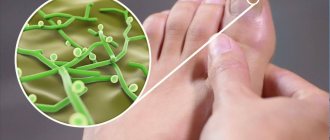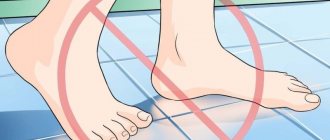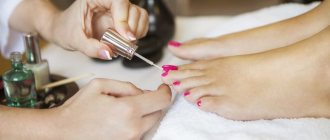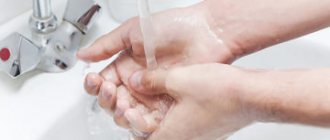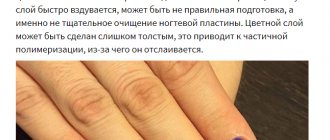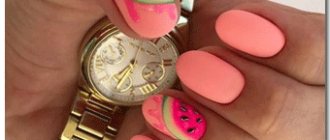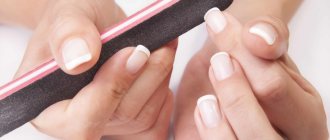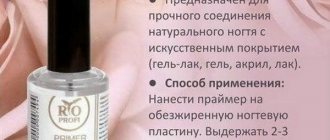Splinter: types, causes and places of occurrence
A splinter is understood not only as the familiar wood chip embedded under the skin, but also in general as any small foreign object located both in the skin and mucous membrane.
A large foreign body causes severe pain to the victim
Penetration of a foreign object into the epidermis occurs due to injury and disruption of the integrity of the integument, which is most often accompanied by a sharp sensation of pain. Small splinters can painlessly penetrate into the upper layers of the skin or mucous membrane and are detected only when complications arise that develop while they are inside the body.
Foreign bodies can be different both in size and in the type of material that composes them:
- metal (for example, shavings. Often lead to rapidly progressing inflammation requiring surgical intervention);
- wooden (chips, sawdust, thorns and plant thorns);
There are cases when the splinter is too deep and the help of a specialist is required
- glass (shards);
- hair (human hair, animal hair).
A hair splinter is formed due to the penetration of a thin and sharp hair under the skin, similar to how a mosquito pierces the skin with its nose
More often, foreign bodies are found in the fingers and palms, as well as under the nails. In such places you can often find wooden splinters, pieces of thorns and thorns. Getting a foreign object into the area of the foot or into the heel itself is common due to the habit of walking barefoot; for example, a shard of glass, metal or a sliver from a wooden floor often gets stuck into the leg. The most dangerous is a splinter in the eye; with such an injury, a person can damage the eyeball due to strong blinking.
General Tips
Before removing a splinter, you should thoroughly wash your hands with warm water and alkaline soap, and treat your skin and tools with an antibacterial solution. If you do not follow this rule, an infection may get into the wound, which leads to complications. The main consequences of improper removal of a foreign particle are:
- the appearance of pus in the damaged area;
- blood poisoning, or sepsis;
- gangrene is the most dangerous consequence.
Important! Under no circumstances should you put pressure on the wound so that the splinter does not penetrate even deeper.
In most cases, you can remove a splinter from your finger at home, but sometimes the intervention of a medical professional is required.
You should contact a specialist when:
- the splinter is deep under the nail, it is not visible;
- the foreign particle is located far under the skin, and it has been impossible to get it out for twelve hours;
- the sliver has been removed, but its end remains, causing concern, and cannot be reached by improvised means;
- a piece of glass was embedded deep in the fabric;
- the wound was caused by a poisonous plant;
- part of the animal has penetrated the skin (fur, cat whiskers, insects, etc.);
- on the wound under which the splinter is located, there is redness, numbness, hardening, throbbing pain or suppuration.
Symptoms accompanying getting a splinter
The main sign by which the presence of a splinter is determined is the appearance of pain at the site of damage to the integrity of the skin or mucous membrane, as well as a piece of a foreign body protruding above the affected surface.
These types of splinters are minor, since they penetrate shallowly and are easy to see and remove.
Also, the foreign body can be located entirely in the skin, under the top layer of epidermal cells, in which case it can still be seen with the naked eye.
Any, even very small, splinter is accompanied by the development of an inflammatory process
Often the skin around the affected area turns red and swelling may appear, especially if the foreign body was not removed immediately. With delay, an inflammatory process develops, because every splinter carries with it an infection caused by contamination of a foreign object.
The appearance of throbbing pain in the wound and a blue discoloration around it means that an abscess has begun to develop under the skin
More frequent complications of a foreign body are suppuration of the tissues surrounding it and the formation of local inflammation. Externally, this is manifested by the appearance of an abscess, thickening of the affected area and visible swelling.
If the splinter has not been removed, or it has not been removed completely, then the inflammatory process progresses until pus appears.
If at this stage the splinter has not been removed from under the skin, then over time it will become more and more problematic to get it out. It is covered with a capsule, inside which pus accumulates. In this case, the former wound disappears, and the splinter remains inside the skin. Any touch to the site of the abscess that has formed causes significant pain. In such cases, it is necessary to contact a surgeon to open the dense growth, remove the splinter and then treat the sore spot.
Some of the splinter remaining inside can fester over time and lead to the formation of an abscess.
Folk remedies
If the foreign body cannot be picked up either with tweezers or with adhesive tape or adhesive tape, you can try to pull out the splinter:
- To remove microscopic, barely noticeable splinters, you can use a remedy widely known in cooking. Make a paste of baking soda and apply it to the splinters. The skin under the baking soda will swell over time and push particles to the surface. This method should be used after all the others, since with wet skin it is difficult to use adhesive tape, tweezers or a needle.
- You can apply the properties of indoor aloe. The juice of this plant perfectly softens the skin and has a bactericidal and wound-healing effect. The cut aloe leaf must be applied with the cut to the wound and secured with a bandage or plaster. After two hours, the foreign body can be easily removed with tweezers. If you use this method to remove a deep splinter from your foot, it will take more time. In this case, the procedure is repeated several times, and the bandage is changed every four hours.
- Birch tar is good at removing splinters. Place a cotton swab soaked in it on the wound and hold it there for 30-40 minutes. The tip of the sliver should come out. Now the particle is easy to remove. You can use pine tree resin instead of tar. It has a bactericidal effect and will help avoid inflammation. This remedy is great for removing splinters from the heel.
- Everyone in the house has potatoes. You need to cut the tuber, apply it cut side to the affected area of the skin and tie it. Potato juice will help pull out the splinter.
- If you tie a piece of fresh lard to the damaged area, the native particle will come out quite quickly.
Removing a splinter without pain
There is an opinion that the splinter can come out on its own, since the body will not accept the foreign object and will push it out from under the skin. This can really happen, but it is certainly unknown whether the outcome will have consequences, whether the foreign body will be completely removed, or how long this process will take.
The best option is to intervene and remove the splinter. With the traditional method, which involves using a needle, there is a high probability of introducing additional infection into the wound; careful preparation for the procedure is necessary. There are other extraction methods in which the splinter will come out on its own:
- use of saline solution;
- use of ointments;
- following folk recipes.
Video: how to safely and painlessly remove a splinter
Preparing to remove a splinter
Disinfection of the affected area of skin is the stage preceding the removal of the splinter. Any drug available in the medicine cabinet can be used as a disinfectant:
- ethyl alcohol (40–70%);
- hydrogen peroxide 3%;
- Chlorhexidine solution;
- alcohol solution of iodine;
- brilliant green;
- potassium permanganate solution;
- Miramistin;
- Fukortsin et al.
Although these products do not affect the regenerative processes of the skin and do not help remove the splinter, they destroy microbes that cause inflammation.
The step-by-step preparation process is as follows:
- Pre-wash your hands using antibacterial or laundry soap.
- Treatment of the wound with the selected antiseptic applied to sterile cotton wool or bandage.
- Cleaning the instrument (tweezers, syringe needle) necessary to remove the splinter from the wound (for example, wiping with a swab soaked in alcohol).
Wash your hands with soap and water before cleaning or handling the area around the shard.
The author of these lines also faced the need to remove a splinter, but most often this happened in the field: at the dacha and in the garden. As luck would have it, I didn’t have any medications with me to disinfect the wound. In this case, I first calcined the needle in a candle flame and treated my hands with laundry soap. Then she carefully opened the skin above the splinter with a needle, grabbed it by the tip and carefully pulled it out. After such removal of the object, I again thoroughly washed my hands with soap and boiled water, paying special attention to the wound. No consequences in the form of inflammation or suppuration occurred after such removal of the splinter.
How can I get it quickly?
To quickly get rid of a splinter, it is important not to waste time and begin removing the foreign body immediately after the accident. You need to act sequentially:
- Clean your hands thoroughly. To do this, you can arm yourself with ordinary soap foam and clean water. Also a good option would be to use hydrogen peroxide or chlorhexidine.
- Disinfect the place where the splinter stuck, as well as the tool you are going to use to remove it. For this purpose, you can use a sharp needle and tweezers.
- Find a well-lit place, if necessary, arm yourself with glasses or a magnifying glass.
- Carefully lift the skin above the splinter or even tear the upper part of the epidermis with a needle.
- Pick up the splinter with a sharp needle or tweezers and quickly pull it out. In this case, you need to move along the same trajectory along which the foreign body stuck into the skin.
- Squeeze the skin around the wound, squeezing out a little blood. This will help flush out pathogenic microorganisms from the puncture.
- Treat the skin with an antiseptic - the same peroxide or Chlorhexidine.
Of course, after removing the splinter, you must observe the sore spot for some time. If obvious signs of inflammation appear - pain, redness and, especially, suppuration, you need to seek medical help.
Methods for removing splinters at home
The best method for removing foreign bodies depends on their material, size, depth of penetration and time spent under the skin. So, splinters made of metal can be removed using a magnet.
The stage of removing a foreign object itself should take place in bright light, for example, under a fluorescent lamp. If the splinter is very small, you can use a magnifying glass, which will also allow you to correctly pick up its tip with tweezers and pull it out.
Removing a splinter using ointments
Ointments are suitable for removing splinters that are small in size and cannot be removed with tools. These agents soften the tissues, draw the foreign object to the surface, after which it is easier to pick it up and pull it out. In addition, ointments have a disinfecting effect and help prevent wound infection. Suitable drugs are:
- Ichthyol ointment;
- Syntomycin ointment;
- Levomekol;
- Levosin;
- Vishnevsky ointment;
- Birch tar.
Step-by-step instructions for removing a splinter:
- The existing preparation is thickly applied to the treated skin in which the foreign object is located.
- The smeared area is sealed with an adhesive plaster for a period of 10 hours to 24 hours.
- After time, the patch is removed and the splinter is easily removed.
Sometimes the foreign object is removed along with the patch. In another case, if the splinter has not completely come out, you can grab it by the emerging tip and remove it using a tool, for example, tweezers.
Photo gallery: pulling ointments
Ichthyol ointment has an unpleasant odor, but helps remove the splinter the next day
Syntomycin is an antibacterial agent that helps stop the inflammatory process caused by a splinter
Levomekol is good not only for removing a splinter, but also for preventing infection after its removal
Levosin is an analogue of Levomycitin, used in a similar way
If the splinter has already festered, then it would be best to apply Vishnevsky ointment to the affected area
Tar helps remove the splinter very quickly; otherwise, you can leave the compress overnight for better results.
Removing a splinter with a needle
This method is not the most pleasant, but the pain when removing a splinter can be relieved by treating the damaged area with an anesthetic, for example, lidocaine ointment.
The Receiver is also suitable for removing splinters from the skin.
The further procedure will be as follows:
- First, the skin in the area of the splinter is steamed to make it easier to remove the foreign body. To do this, immerse the affected area, for example a finger, in a container of hot water for 10–15 minutes.
- If the splinter is clearly visible and one of its ends can be grabbed with a tool, then you should carefully pull it out with tweezers, trying not to break it into pieces.
- In the case when the tip does not rise above the surface, the prepared needle is inserted under the skin next to the splinter so that it is parallel to the stuck object, 1–2 mm.
- With gentle movements, they tear the top layer of skin covering the splinter, which consists of dead epidermal cells.
- The tip thus freed is picked up with tweezers and taken out at the same angle at which the splinter entered the skin.
This method is more suitable for removing large splinters located shallow under the skin.
Video: removing a splinter with a needle and tweezers
Using traditional methods
Some of the traditional methods are widespread, others are less commonly used, but they are united by their high efficiency in removing foreign objects stuck in the skin.
Iodine
The use of iodine involves removing small splinters located shallowly on the surface. It is believed that with repeated treatment of a damaged area of skin with the product, the foreign body simply “burns out.” Removing a foreign object from the skin with iodine is applicable when getting a wooden splinter; in other cases it will not help.
Table salt
A saturated salt solution is especially helpful in removing splinters from under the nail.
Preparation of the solution:
- Boil water and pour a glass of boiling water into the container.
- Add 3 tbsp to it. l. salt and stir until dissolved.
Salty hot water softens the skin and helps remove the splinter.
Removing a splinter:
- Wait for the water to cool slightly. The finger must be dipped into a hot saline solution, only in this case the method will be effective.
- Keep your finger in salt water for 15 minutes.
- After time has passed, remove your finger from the solution and pull out the foreign body with tweezers (the salt will cause the skin to shrink, causing it to move towards its surface).
This method is also effective in removing a foreign body from the heel, where the skin is particularly rough. For an old splinter, hot salt baths are ineffective.
PVA glue
Removing a foreign object with glue is quick and painless. This method is suitable for removing numerous superficial splinters from the skin.
PVA glue replaces tools for removing splinters
Step-by-step instruction:
- The damaged area should first be steamed in hot water for 15 minutes.
- After time has passed, blot the skin with a dry towel, but do not rub it.
- Thickly pour white glue onto the steamed skin and leave it until it dries.
- Remove the adhesive film, which will pull out the splinters along with it.
In the same way, you can remove splinters using tape or adhesive tape, replacing them with PVA. It is prohibited to use Moment glue for the same purpose!
Vegetable oil
If the effectiveness of other methods is low, the use of oil will help:
- Heat the oil in a water bath to an acceptable temperature (50–60 degrees) so that there is no burn.
- Moisten cotton wool with hot oil and apply to damaged skin for a quarter of an hour.
- Remove the splinter that appears with tweezers.
Vodka or ethyl alcohol
Alcohol in the house will also help remove the splinter:
- The injured finger or other sore spot should be dipped in a container of alcohol.
- Keep the limb in ethanol for half an hour.
- Take out the splinter that appears.
Rubbing alcohol is suitable not only for treating wounds, but also for removing splinters
Banana peel
Banana peels are also a popular method for getting rid of splinters:
- From the pre-washed skin you need to cut a piece of suitable size.
- Before going to bed, apply the inside of a banana peel to the sore spot and secure with a bandage.
- In the morning, remove the bandage and remove the splinter that appears.
Banana peel is a rather exotic, but effective way to remove a foreign body from under the skin
Onion gruel
A not very pleasant, but effective way to remove a splinter with an onion:
- Wash and peel one onion.
- Grate it, pass it through a meat grinder, or use any convenient method for grinding.
- Apply the resulting pulp to the damaged skin, cover the top with a gauze cloth and bandage it.
- After 2 hours, remove the bandage and remove the splinter.
Cosmetic clay
Clay is the best way to remove an old splinter where an abscess has formed. Instructions:
- Pour cosmetic clay (1 tbsp) purchased from a pharmacy into a suitable container.
- Add water, gradually stirring the product. The finished composition should resemble sour cream in consistency.
- Pour half a spoonful of table vinegar into the diluted clay and mix.
- Apply the resulting solution to the affected area of skin.
- After the clay has completely dried, wash it off with warm water and reapply a fresh composition. Repeat the procedure until a splinter appears on the surface of the skin.
For the best effect, the clay should be diluted with hot, not cold water.
Raw potatoes
Potato gruel has a softening and loosening effect on the skin, which helps remove splinters:
- Wash and peel the potatoes, then chop them using a grater.
- Apply the resulting paste to the wound overnight, cover with a napkin and bandage it.
- In the morning, remove the bandage and remove the splinter.
In the same way, fresh lard, bread crumb, cottage cheese and aloe leaf can be applied to the skin at night.
Potato pulp is effective for removing glass splinters
Video: removing a splinter using traditional methods
Caring for damaged skin and relieving symptoms
After removing the splinter, it is imperative to disinfect the wound. In this case, you can use the same drug used when treating the skin before removing a splinter.
If blood starts to flow from the resulting wound, a sterile bandage should be applied to prevent infection from penetrating into the soft tissues.
If there is visible inflammation in the former location of the splinter, it is necessary to treat the wound with antimicrobial ointment (Synthomycin, Levomekol, Levosin). Application of the drug is possible only in the absence of bleeding, otherwise the process of suppuration can only worsen.
Disinfection after removal of a foreign body is a mandatory step for rapid wound healing
For severe pain after removing a splinter, you can use local anesthetics based on lidocaine or take NSAIDs (Nurofen, Ibuprofen).
Seeing a doctor
You should definitely visit a surgeon in the following cases:
- the splinter was not completely pulled out;
- the foreign object has sharp jagged edges, and you are afraid to remove it yourself;
- a glass splinter crumbled under the surface of the skin;
- a foreign body is located in the mucous membranes of the eye;
- the splinter is located at a great depth, and there is no way to get it out on your own;
- the length of the foreign object exceeds 0.5 cm;
- the appearance of a splinter is accompanied by an increase in body temperature;
- after removing the foreign object, suppuration appeared and the inflammatory process began.
When contacting a doctor, it is worth checking when the victim was last vaccinated against tetanus and, if necessary, get it again.
How to remove a small splinter from your finger if it is deeply embedded
Work in the garden, household and household activities can result in injury. A splinter is an unpleasant phenomenon. Getting it can be problematic.
What is required for extraction?
It doesn't matter how deep the splinter is stuck in the tissue. It requires caution and asepsis.
To extract you will need:
- Provide yourself with good lighting.
- Tweezers or a regular sewing needle.
- Alcohol (vodka) for antiseptic treatment of devices.
- Several cotton pads. Pieces of clean fabric and a scarf are also suitable.
- Hydrogen peroxide to treat damaged skin.
- Zelenka or iodine.
Features of removing a splinter from a child
Children easily run towards adventures, sometimes this ends in injury and tears. When trying to provide help, they resist and are capricious. It is necessary to reassure, explain that it is not scary to pull out a splinter. Try to distract by talking about your favorite fairy tale or cartoon. After the foreign object is removed, treat the wound with iodine and blow on it together to make the pain stop faster. Special patches with designs are made for children; they are fun and colorful. The child will be happy to wear it. You can apply a gauze bandage and color its edges with felt-tip pens. A fun treatment will show children that removing a splinter is not at all scary.
Standard methods
How to remove a splinter from your finger if it is deep? Sharp objects are used. Tweezers and a sewing needle are popular. Ointments, steaming baths, bandages and soda help well.
Whatever you use, don't forget to treat the surface of the wound and the tools. A timely visit to a doctor will help to avoid secondary infection and serious consequences.
Using tweezers
Before we begin, we prepare the necessary equipment. Further:
- Water the damaged area of skin generously with peroxide.
- We treat the tools with cotton wool and an alcohol solution.
- Carefully hook the edge of the splinter and slowly pull in the direction opposite to the entry.
- We treat the damaged area of the skin with brilliant green or cover it with a band-aid.
- If you are not sure that the splinter has been completely removed, steam the skin and repeat the procedure.
Using a sewing needle
There are cases when the tip of a foreign body cannot be picked up with tweezers. To make the work easier, first steam the skin in warm salt water, then:
- Using prying movements, tear the thin top layer of the epidermis.
- When the film of skin is removed, pick up the splinter with a needle or grab it with your fingernail.
- Be sure to treat your finger with an antiseptic and cover it with an adhesive bandage.
Pulling out splinters with medicines and compresses
We discussed above how to remove a small splinter from your finger. But what to do if a foreign object has penetrated deep into the epidermis? There is no end in sight - there is nothing to grab onto. Tweezers and a needle will not help, nor will steaming. In such cases, the following recommendations will be useful:
- Using Vishnevsky ointment. It has a lot of useful properties. Good pulling ability will help you get rid of the problem in the morning. Apply ointment generously to the affected area and bandage it loosely: the substance will be absorbed into the skin as much as possible, and the bandage will not stain surrounding objects.
- Prepare a glass of hot water. Dissolve 2-3 tablespoons of salt in it. Dip gauze folded several times into the resulting solution and apply to the splinter. As soon as the material begins to cool, repeat the procedure. The alkaline environment of the solution and the heat will draw the splinter out.
Ointments are used when a strong effect on deep tissues is required. Local medications have a high penetrating ability, forming a film on the skin. For weeping wounds, a cream is more suitable - it contains a lot of water. The ointment is used for dry lesions.
Traditional methods
If the splinter is not very big, you can use the knowledge of previous generations. These treatments are collected and tested by many people.
Their advantage is that the necessary items are always at hand and are often used in everyday life. The contents of the first aid kit in the house can be used in unusual ways.
- Press the sticky side of the adhesive plaster onto the damaged area. We remove it in the direction opposite to the entry of the splinter. You can use tape or rag tape in the same way.
- Mix clay and cottage cheese in equal proportions, apply to the wound, cover with cellophane and bandage overnight. As a substitute for the ingredients, bread mashed in your hand and a highly salted solution of water are suitable. The paste is applied to the site of entry and bandaged overnight.
- A banana peel applied to the damaged area will soften the skin in a few hours, and the chip will easily come out on its own.
- You can speed up the steaming process with warm water and salt. In 20-30 minutes, a small splinter will come out of the skin, and the mark after such a procedure will quickly heal.
Reasons to see a doctor
In some cases, when a foreign object gets under the skin, the help of a specialist is required:
- The splinter is large and has penetrated very deeply into the tissue.
- The removal attempt ended with the end broken off and further access impossible.
- The wound began to fester and tear.
- A thorn from a poisonous plant got under the skin.
- The extraction was successful, but the injury site turned red, festered, and swollen.
Steps to take before visiting the doctor
To make the specialist’s work easier, treat the wound with antiseptics more often. Steam the skin with warm salt water. But if you have already encountered complications in the form of suppuration, swelling, redness, thermal procedures are contraindicated. You can easily bandage the wound area to avoid additional damage along the way.
Possible consequences
A splinter is a foreign body. Getting it under the skin can lead to infection. If this happens, the site of injury will swell, turn red, and begin to fester. If the chip gets deep under the nail, it will begin to tear away. In addition to pain, there is a danger of infection spreading into the blood.
Any splinter must be removed in a timely manner, and if you are unsuccessful in trying to do it yourself, do not delay contacting a specialist.
Suppuration in the finger can lead to panaritium, which can be quite problematic to cure. In severe cases, dysfunction of the ligaments that move the fingers occurs due to loss of fluid around them. The finger will remain in a fixed position; it will be impossible to bend or straighten it.
Secondary infection of the wound often leads to tissue necrosis, rejection of the nail plate or its deformation. Microbes can get in not only with a splinter, but also when trying to remove it with untreated tools or dirty hands.
Thus, any splinter must be removed from the tissues. Treat skin and tools for self-extraction. A splinter can cause complications, so do not delay seeing a doctor if the injury site begins to redden and swell.
noginashi.ru
Forecast and possible consequences
You should not expect the splinter to come out on its own with lymph or pus. Such tactics can lead not only to severe suppuration and the formation of an abscess, but also to blood poisoning and even the onset of gangrene.
The prognosis is also sad if incorrect actions are taken when removing a splinter: lack of disinfection, pressure on a foreign object and picking at wounds can lead to the foreign body breaking, crumbling, and the infection going into deeper tissues. For the same reason, you cannot steam the damaged area if suppuration has already begun.
In the absence of timely vaccination, the consequence of a splinter may be the development of tetanus. Therefore, if medical attention is ignored, a small foreign body can cause death.
Foreign objects made of glass and metal are much more dangerous than wooden ones. Such splinters can not only damage soft tissues, but also touch nerve endings, which will lead to unbearable pain. The inflammatory process with a metal splinter develops more rapidly, since this material tends to rust. The infection enters the blood and quickly spreads throughout the entire limb.
Features of removing a splinter from a child
Children easily run towards adventures, sometimes this ends in injury and tears. When trying to provide help, they resist and are capricious. It is necessary to reassure, explain that it is not scary to pull out a splinter. Try to distract by talking about your favorite fairy tale or cartoon. After the foreign object is removed, treat the wound with iodine and blow on it together to make the pain stop faster. Special patches with designs are made for children; they are fun and colorful. The child will be happy to wear it. You can apply a gauze bandage and color its edges with felt-tip pens. A fun treatment will show children that removing a splinter is not at all scary.
What to do if you get a splinter
So, you inadvertently drove a splinter under your skin, say, under your finger. Leaving a foreign body in your body is not the best solution, therefore, you need to take the right steps and remove the splinter as soon as possible. But how to do it right?
As practice and life experience show, when we find ourselves in such a situation, many of us make obvious mistakes. So, for example, they begin to squeeze out a splinter. Under no circumstances should you do this, because if the splinter is sharp and small in size (by the way, such splinters are the hardest to get out), you will drive it even deeper, and if the structure of the splinter is fragile, then by squeezing out you can split it into multiple parts, and then it will be much more difficult to get rid of them. That's why,
Remember the first rule - do not squeeze out the splinter.
Well, wash the place where you drove the splinter with soap and water and dry it gently with a towel - this is recommended. However, if the splinter is made of wood, then it is better that it does not get wet, as well as the skin around the place where the splinter sits. This will make it more difficult to remove the splinter.
Don't try to remove a splinter at random. This way you will only harm yourself. Take, if possible, a magnifying glass or magnifying glass, and look carefully at the place where you think the splinter is sitting. Determine the size of such a splinter, as well as the angle at which it penetrated under the skin - this will help you decide on the best method and method for removing such a foreign body.
Features of a splinter in the foot
The skin on the feet is designed to become rough, so a splinter in the heel is an unusual condition for the body
The skin on the feet of most people is quite dense, and is anatomically designed to be rough, preventing splinters at all.
Since we practically don’t walk barefoot on the ground, and we brutally fight attempts at hormonal keratinization of the skin, our body is faced with a situation that, in principle, should not exist.
When walking, the entire weight of an upright primate falls on the foot, and not all at once - on the heel or on the toe. As a result, the splinter penetrates deeply, the thick skin fixes the foreign body, and the base breaks off under pressure almost immediately.
Standard methods for removing splinters do not work here; special skill and preparation are required.


